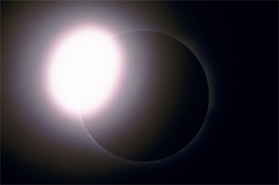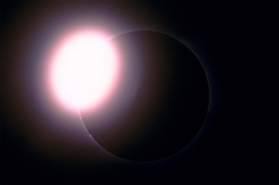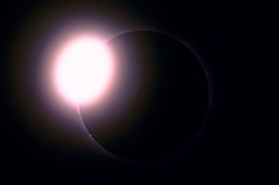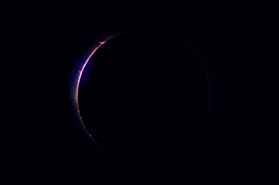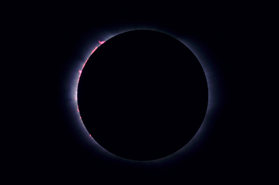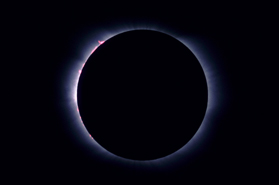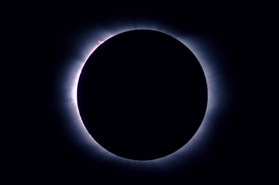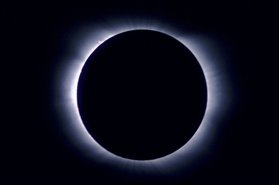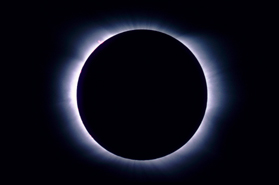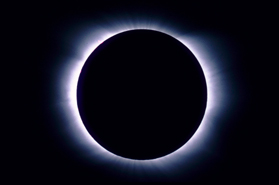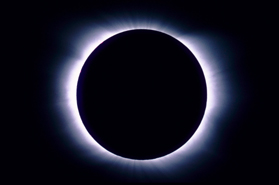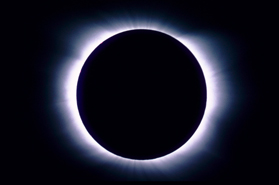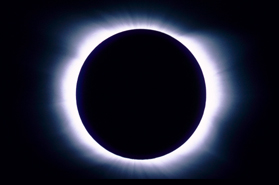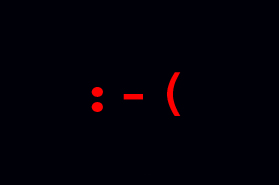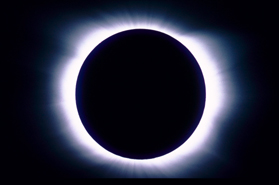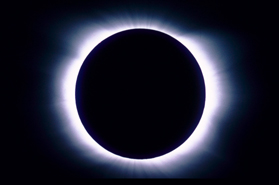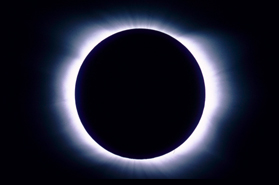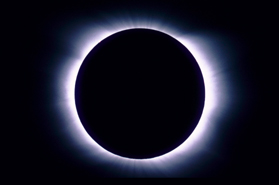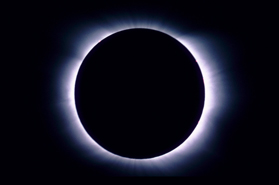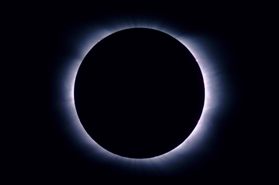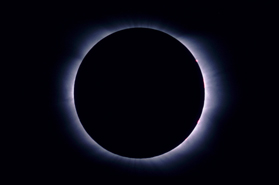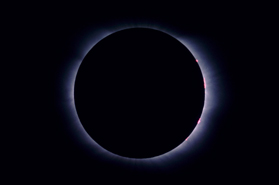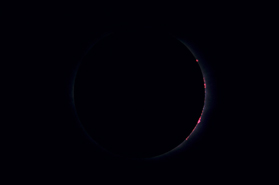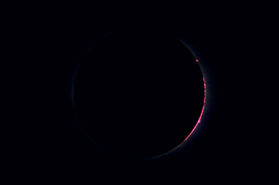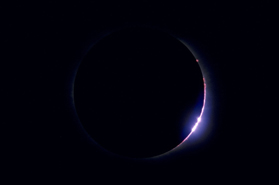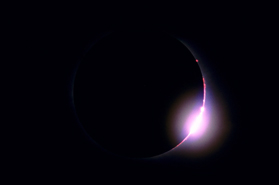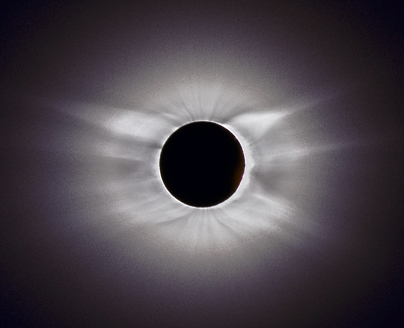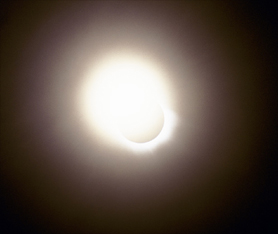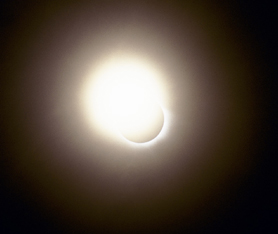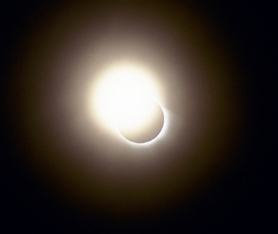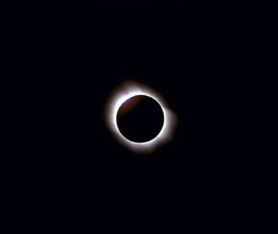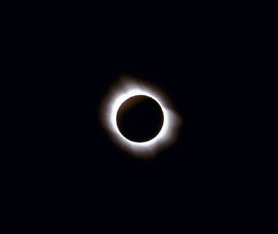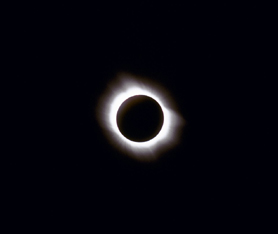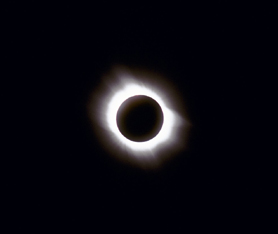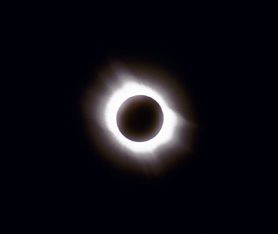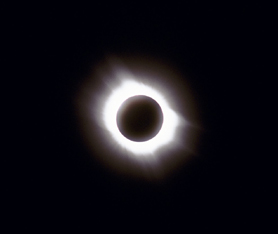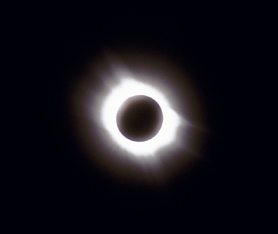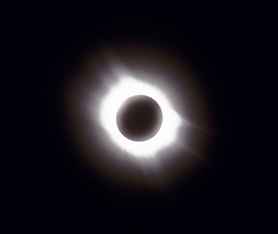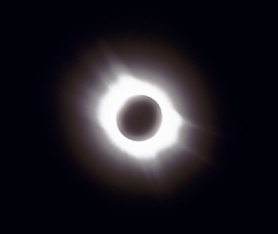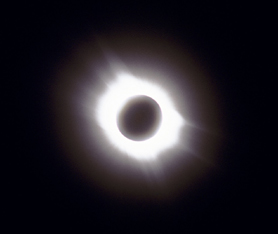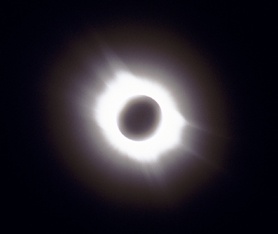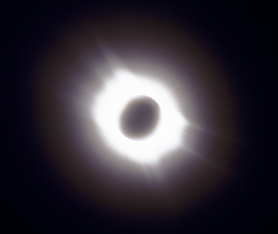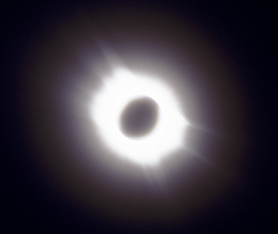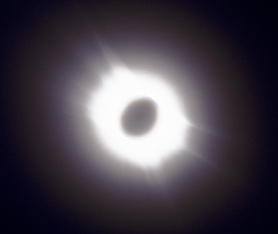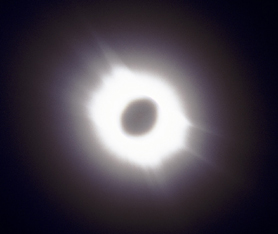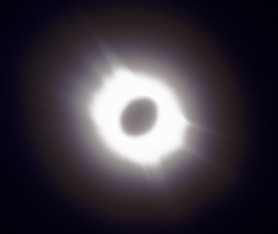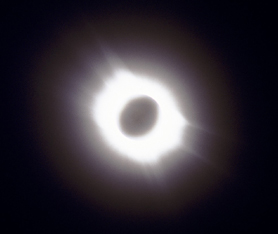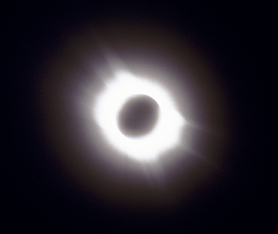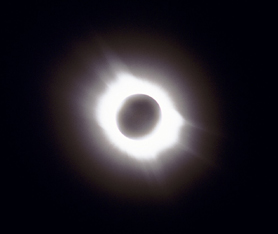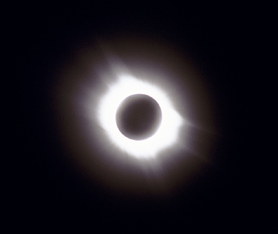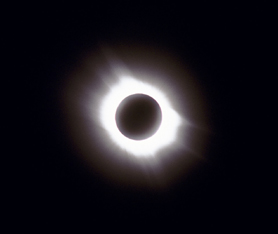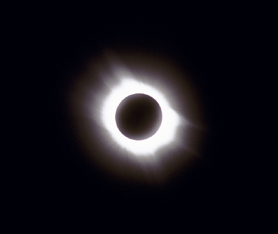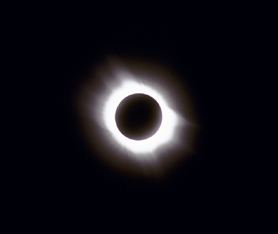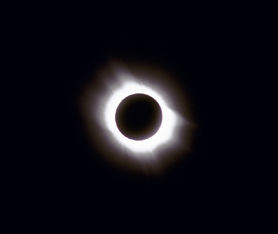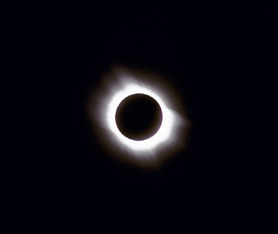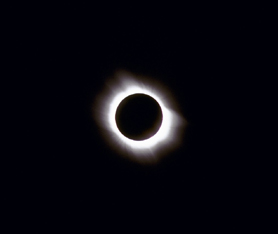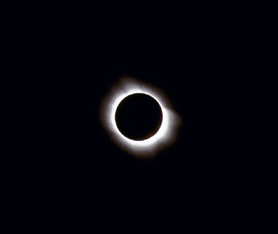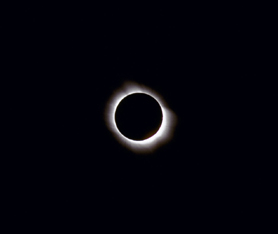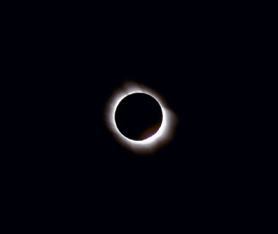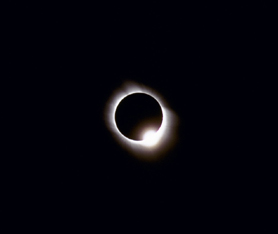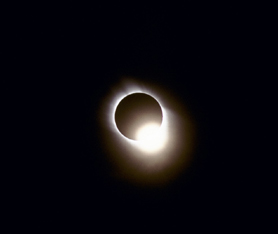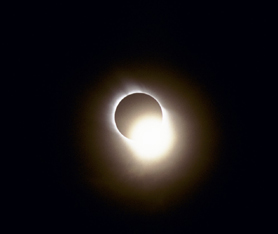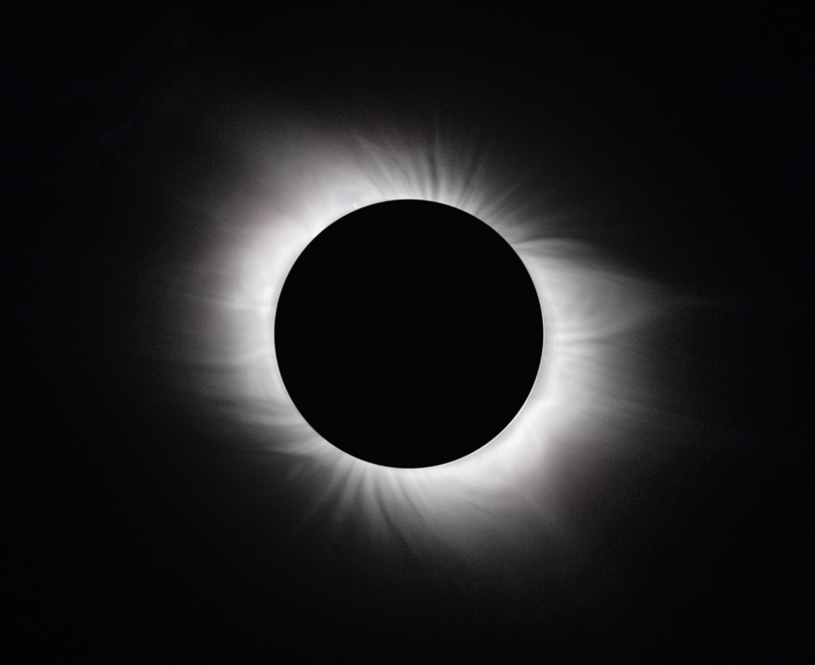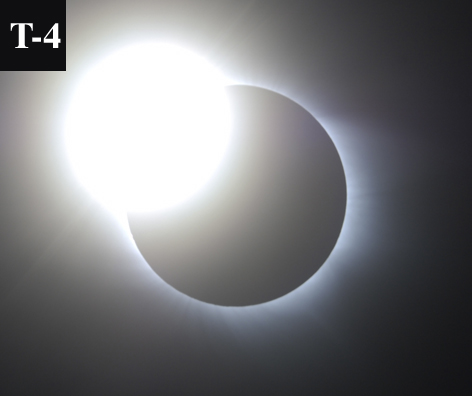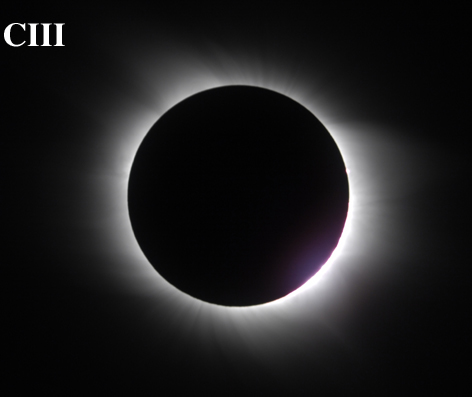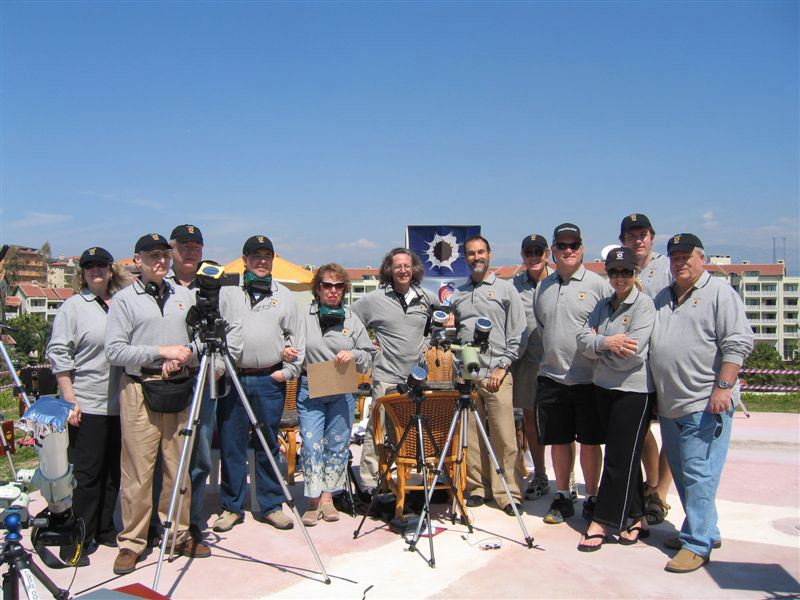SIDE, TURKEY (31d 22' 38.7"E, 36d 45' 15"N)
Glenn Schneider
Steward Observatory, University of Arizona
All images and movies on and linked from this page © Glenn Schneider and/or Joel Moskowitz 2006
Chromosphere & Prominences (at contact II)
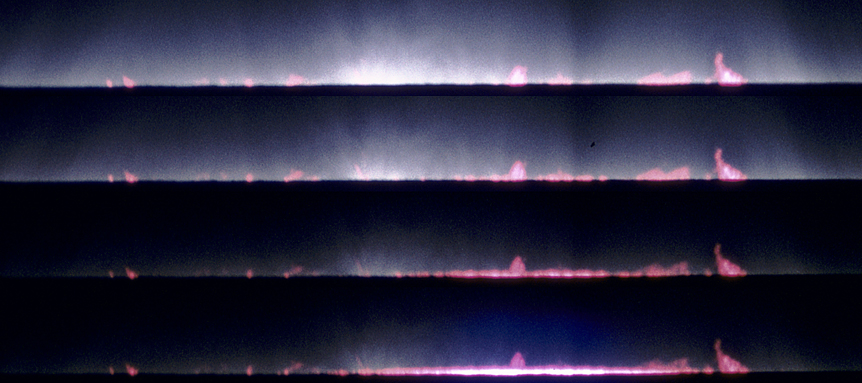
The ephemeral and transitory appearance of the solar chromosphere (thin, red, horizontal layer between the photosphere and the corona), surrounded by prominences, is captured in this time-lapse image sequence along the Sun's western limb at, and shortly after, second contact -- unwrapped into a rectilinear projection. Time progresses from the bottom up: (105501.68, 105509.63, 105517.57, and 105525.52 U.T; <-- click on times to see unprojected frames). Click HERE (or on the image) to see the above image sequence at twice the image scale.
Inner Corona & Prominences
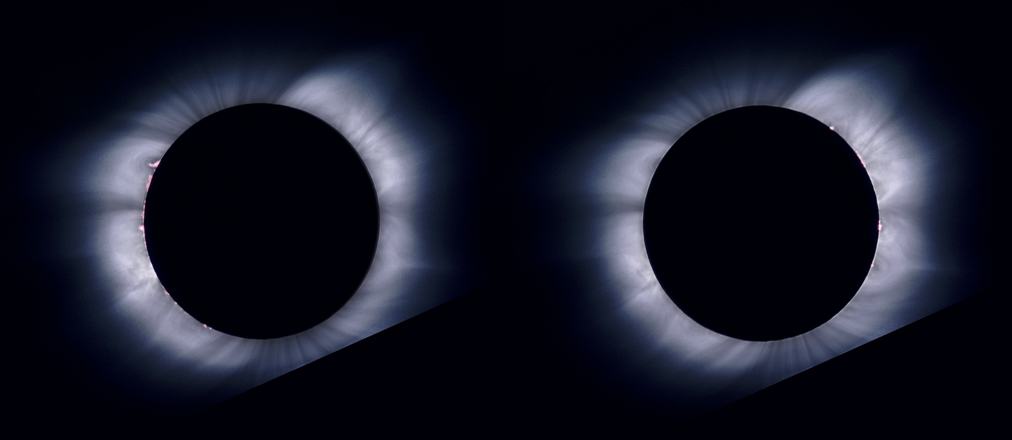
The Moon's west-to-east motion across the face of the Sun reveals prominence on the Sun's eastern limb soon after second contact (left at 10:55:17.6 U.T [<--click to see at 2x]), and on the Sun's western limb (right at 10:58:28.3 U.T. [<--click to see at 2x]) in these inner/mid coronal images. Both images are composites made from the individual high resolution (1.2 m EFL) images described below (left: images 7-19, right images 19-30). Click HERE (or on the image) to see an overlay of the two composites, showing the solar prominences seen on both limbs.
The Diamonds & Baggets of the Contact III Diamond Ring
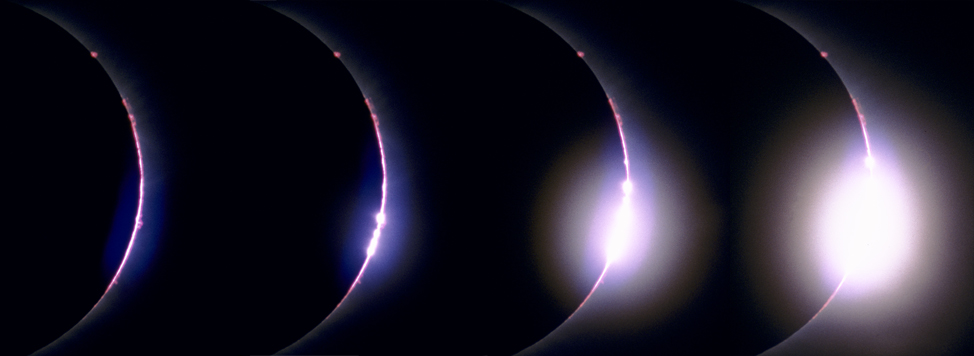
...and then, following the re-emergence of the chromosphere, the photosphere erupted into a tight series of Baley's beads - the glinting sparkle before the diamond ring heralding the end of a glorious totality. Compare the above four images (click HERE, or on the image to see at twice the image scale), to the four, below, taken at exactly the same instants (left to right: 105844.15, 105846.15, 105848.15 and 105850.15) with a synchronously exposed wide-field camera showing the evolution of the diamond ring against the corona enshrouded moon.

Click HERE, or on the the above image to see at twice the image scale.
Outer Corona : Streamers & Coronal Holes
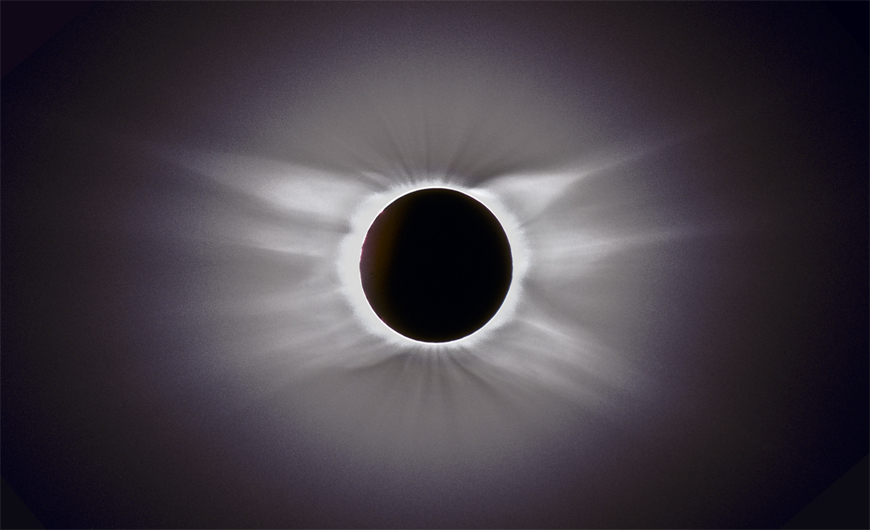
The structure of the TSE2006 corona appears roughly bi-laterally symmetric on large spatial scales. The complexity of the outer corona, and smaller angular-scale azimuthal anisotropies, are none-the-less apparent in deeply exposed imagery (here, to a distance of > 4.5 solar radii). Composite imagery from the 400 mm EFL "wide field" camera.
Mid-Corona & Polar Brushes

An intermediate image scale details the structure of the mid-corona, and lower surface brightness polar brushes.
Click the above image to see at 2x finer detail.
How were the above images made?
Inner Corona/Prominences & Outer Corona
|
TSE 2006 was imaged with two
synchronously exposed 35mm film cameras.
The image scales, f/ ratios, film sensitivities, and exposure durations
were selected to capture the wide dynamic range and differing spatial
scales of eclipse phenomena.
The two camera systems differed in sensitivity (for equal exposure durations) by a factor of 29. (Near) log-normal exposure ramps (15 to 1000 ms exposure durations) were identically executed in both cameras from CII to mid-eclipse (and, symmetrically from mid eclipse to CIII), providing an imaging dynamic range for the imaging sequences of ~ 2000 (11 "f" stops) in addition to the intrinsic latitude of the films used for individual exposures. 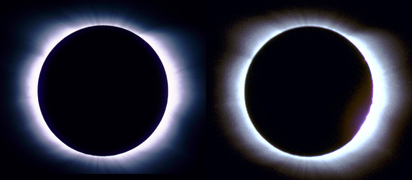 |
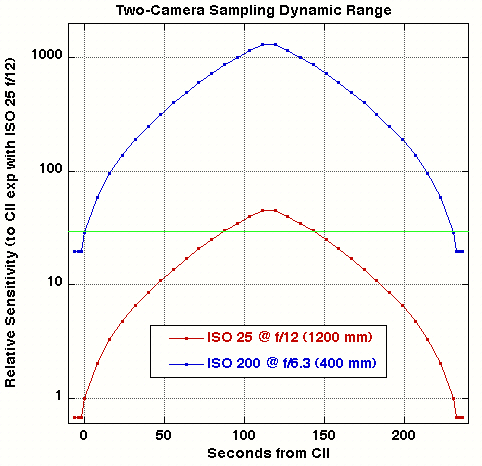 Camera system sensitivities "overlapped" with exposures in Camera 2 at/near contacts and Camera 1 at/near mid-eclipse (green line). Left image pairs shows Camera 1 exp # 22 (left) and Camera 2 exposure #33 (right), (reproduced at the same image scale for comparison). |
Mid-Corona
A third, asynchronous, but autonomously operated 500 mm EFL digital camera was used to capture the mid-corona.
The three camera and imaging systems, and the images obtained with them, are discussed below.
"High Resolution" Chromospheric/Inner Coronal Imagery with "the Lug-a-scope"
1200 mm EFL ("Narrow" FOV) f/12 Achromatic Refractor
5-3/4" 1/8-wave coelestat (solar tracking mirror)
Kodachrome (ISO) 25 P, (UMBRAPHILE camera controller)
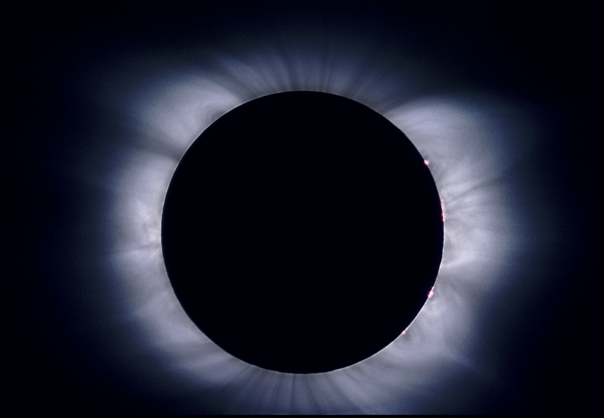
Click image to view at 2x
View "Movie": [Full Size, 1fps] [Half Size, 6fps] QuickTime viewer
Click on any image to view a larger version
